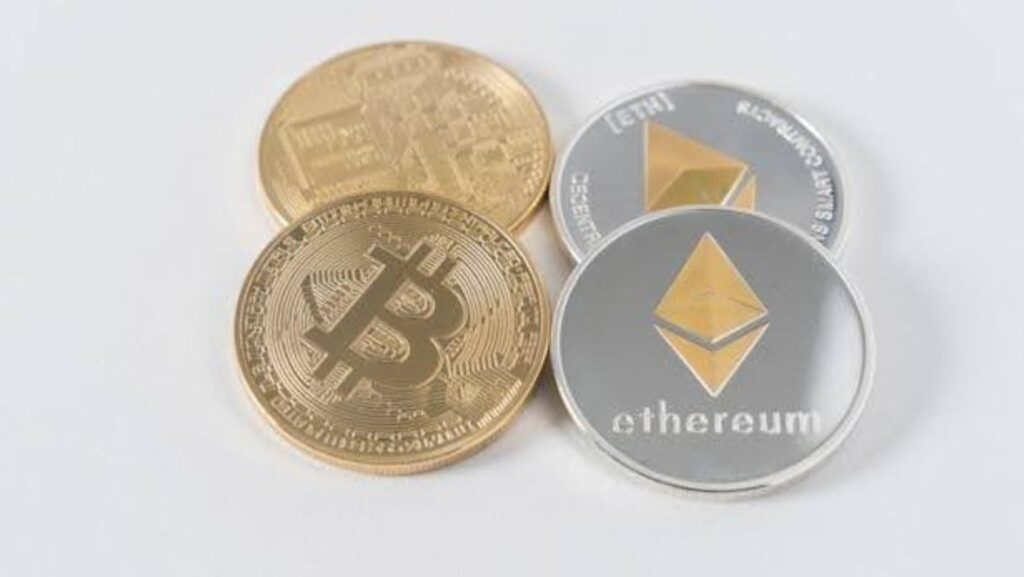Diversification is a core tenet, guiding investors through periods of market volatility towards financial prosperity, and it requires a commitment to learning. When cryptocurrencies with different properties are combined in a portfolio, the overall level of risk is reduced. If one cryptocurrency fails or performs poorly, you don’t lose all your money, but returns are affected by a mix of supply and demand dynamics, market sentiment, and adoption levels.
For investors seeking robust portfolio diversification, understanding how to crypto and spread risk to maximize opportunities is crucial. It isn’t inherently hard, but achieving effective diversification requires time, knowledge, and continuous management, which can become challenging. Diversification is both an art and a science, meaning it requires a rigorous, analytical approach and a more subjective, intuitive one.
These are the steps you can take to ensure you have a well-rounded crypto portfolio:
Build A Collection Of Different Types Of Cryptocurrencies
Choose different kinds of cryptocurrencies to reduce the risk of your portfolio underperforming simultaneously and achieve more stable long-term returns. The fluctuations of one asset are unlikely to echo those of another. This reduces overall risk, so your portfolio maintains its value and meets your financial objectives in the long run. Invest in a wide array of cryptocurrencies characterized by different attributes and expected to exhibit divergent behavior under varying market conditions, such as:
- Established coins: Invest in coins that have achieved a significant level of recognition, adoption, and stability within the crypto market, like Bitcoin or Ethereum. Establish profit limits and stop-loss orders to guide your selling decisions. The crypto market is vast and includes many different coins, but a handful steadily rank at the top. Examples are Solana, XRP, Cardano, and Dogecoin.
- Utility tokens: As the name suggests, utility tokens provide access to a specific function or service within a blockchain ecosystem. Basic Attention Token (BAT) is used to compensate users for the time spent viewing an ad in the Brave browser. Utility tokens can provide value to investors. A high market cap can indicate a mature project, but it could also mean there’s less room for growth.
- Stablecoins: Stablecoins exhibit significantly less volatility and speculative behavior than other digital assets because they’re pegged 1:1 to real-world assets. Their stable value allows you to engage in loans or yield farming without the risk of notable price fluctuations. USDC (USD Coin) or USDT (Tether) can be used to temporarily exit volatile positions without returning to fiat.
Spread Investments Across Small-Cap, Mid-Cap, And Large-Cap Cryptocurrencies
Market cap reveals a cryptocurrency’s scale and importance within the broader ecosystem by multiplying its current unit price by the total number of coins in circulation, offering a benchmark for comparing projects, monitoring growth, and determining market dominance. Bitcoin’s status as digital gold is debated but growing, benefiting from fixed supply mechanics and institutional reserve mandates, including US strategic holdings. According to Binance.com, institutional investors are increasingly favoring Ethereum, which is on the point of matching Bitcoin in ETF inflows.
Mid-cap cryptocurrencies offer a balance of growth potential and risk. Although they’re not established as large-cap cryptocurrencies (i.e., Bitcoin, Ethereum, and Tether), they offer more growth potential compared to small-cap cryptocurrencies (i.e., Immutable, Flux, or xMoney). Mid-cap cryptocurrencies outperform during bullish markets while maintaining relative resilience during downturns. Bear in mind your time horizon for your changes and investment decisions, since they may take years to expand in value.
Many small-cap projects operate in emerging areas of blockchain technology, such as artificial intelligence and the Internet of Things. TOKEN6900, for instance, thrives on Internet humor. It rejects conventional crypto fundamentals, meaning it offers nothing of value, nor does it have any future plans. The smaller capitalization of such coins translates into the fact that even modest increases in demand can lead to substantial price movements. If you think the idea is great and token recognition will soon reach its full potential, take a chance.
Explore Different Crypto Sectors To Capture Growth Opportunities
Investing across different blockchain sectors can help you protect your portfolio from the risks associated with any single one. Your portfolio can focus on niche areas, such as decentralized finance (DeFi), non-fungible tokens (NFTs), or the metaverse. Each market segment may respond distinctly to variables like technological innovation, regulatory developments, or shifts in user adoption. By directing capital towards specific sectors, you can focus on areas with strong growth potential or structure your portfolio around those you believe will outperform the broader market.
Don’t ignore smart contract platforms. Decentralized digital platforms like Ethereum enable automated, self-executing contracts with the terms written into the code; these applications reduce counterparty risk, increase efficiency, lower costs, and improve transparency. Smart contracts can be created for various use cases, including voting processes, tokenized assets, and mobile apps. Investing directly in smart contract platforms offers the most efficient path to capitalize on the trend,
Include Non-Crypto Assets In Your Portfolio
An exchange-traded fund (ETF) offers indirect exposure to cryptocurrency, thereby eliminating the requirement to assume direct ownership, custody, or management of the underlying digital assets. A spot ETF achieves nearly the same price performance as its underlying asset, whereas a futures ETF speculates on the future price of its underlying asset. A crypto ETF can be traded through standard brokerage accounts. It’s managed by professionals with expertise and resources to navigate volatile crypto markets.

You can also invest in an index fund that tracks the top cryptocurrencies to ensure exposure without manual allocation. Besides diversification, an index fund guarantees peace of mind, as it’s overseen by a professional asset management firm that specializes in digital asset investing. More exactly, dedicated teams of analysts and portfolio managers handle index construction, ongoing rebalancing, risk management, and regulatory compliance.
Wrapping It Up
Diversification also applies to how you store your funds, which can impact your portfolio’s liquidity. It’s recommended to store some cryptocurrency for long-term investment in a hardware wallet for maximum security, as it keeps your private keys offline, and keep some cryptocurrency in a software wallet for trading. Staking rewards you with additional blockchain-based assets. You can use some cryptocurrency as collateral for lending or borrowing.


